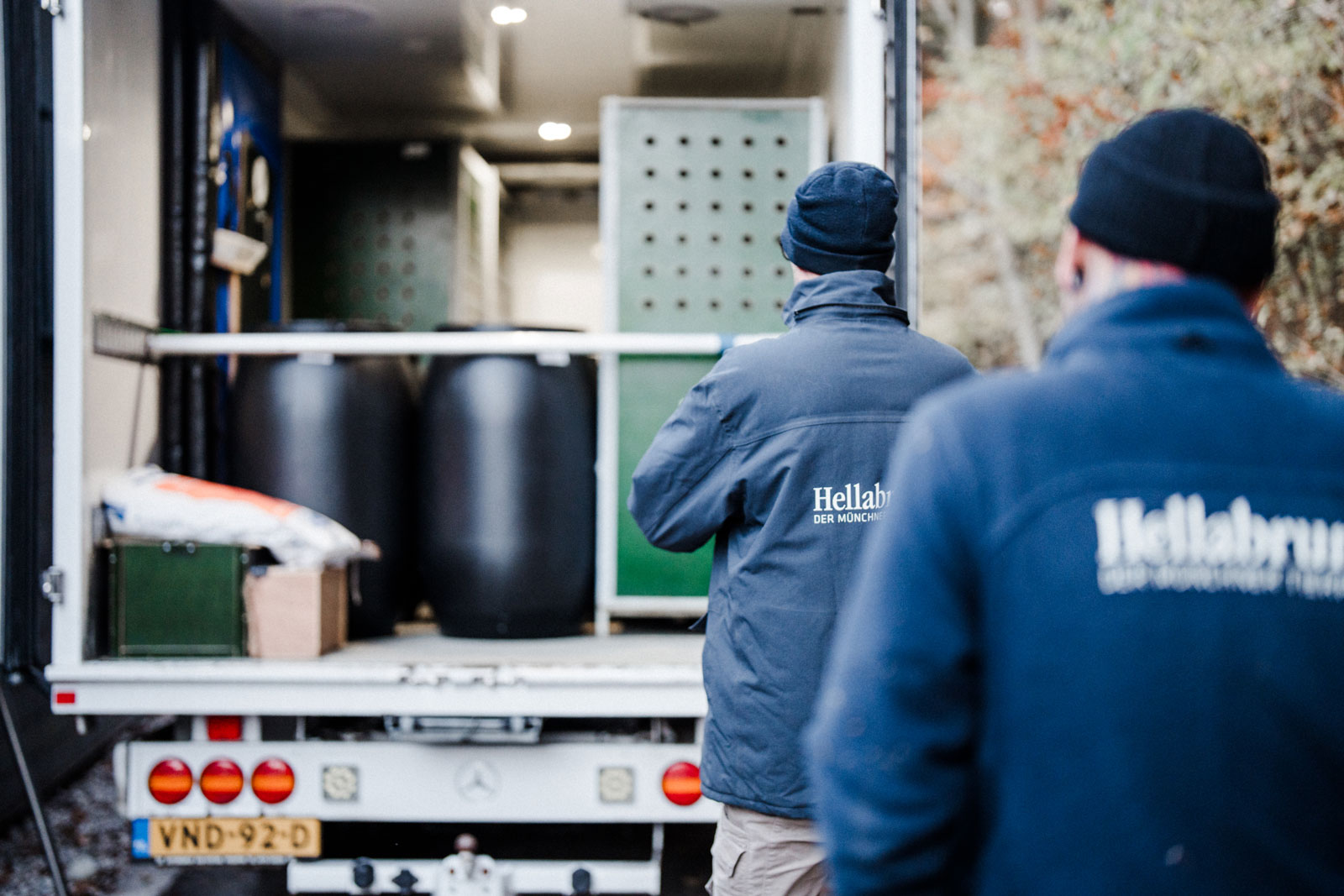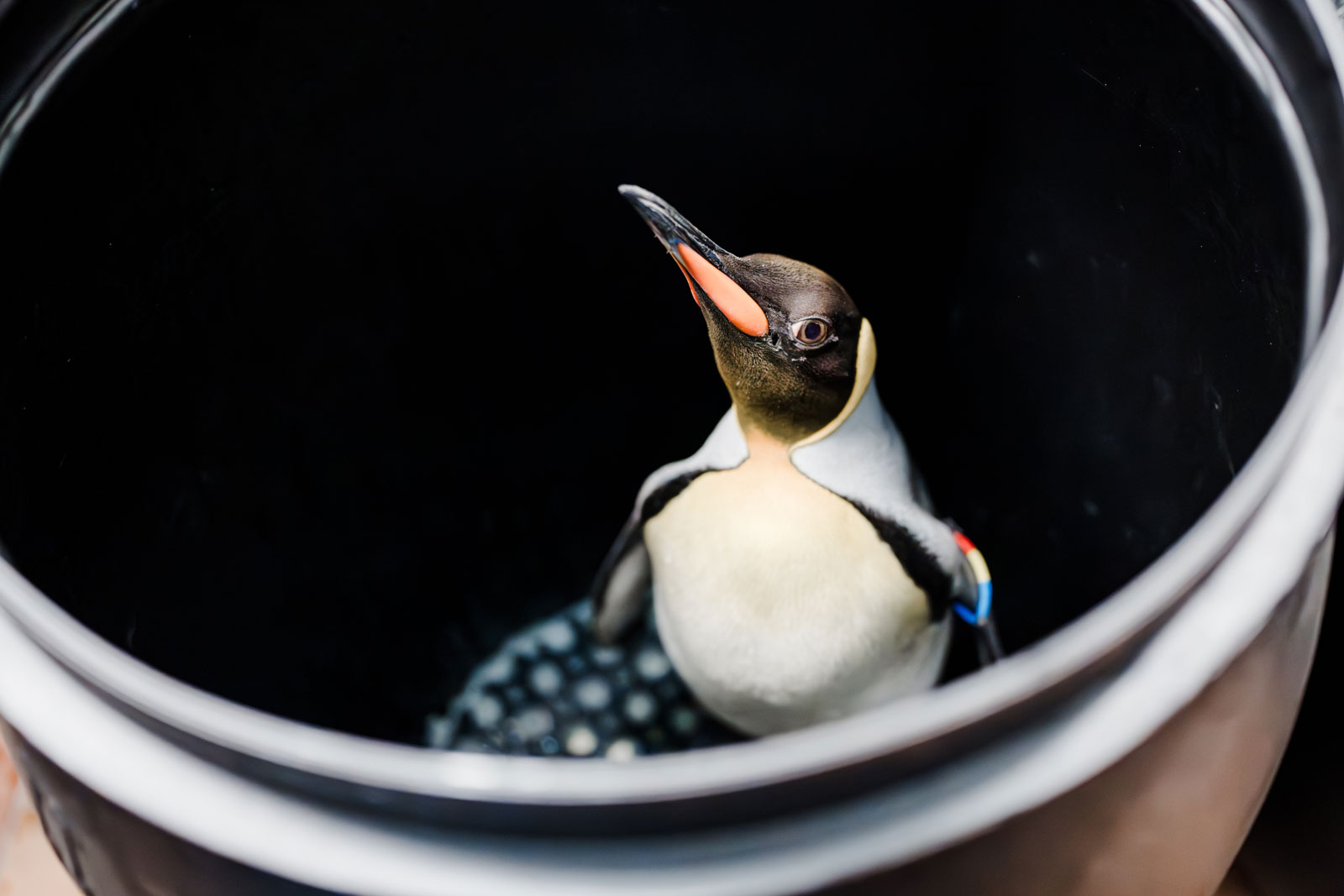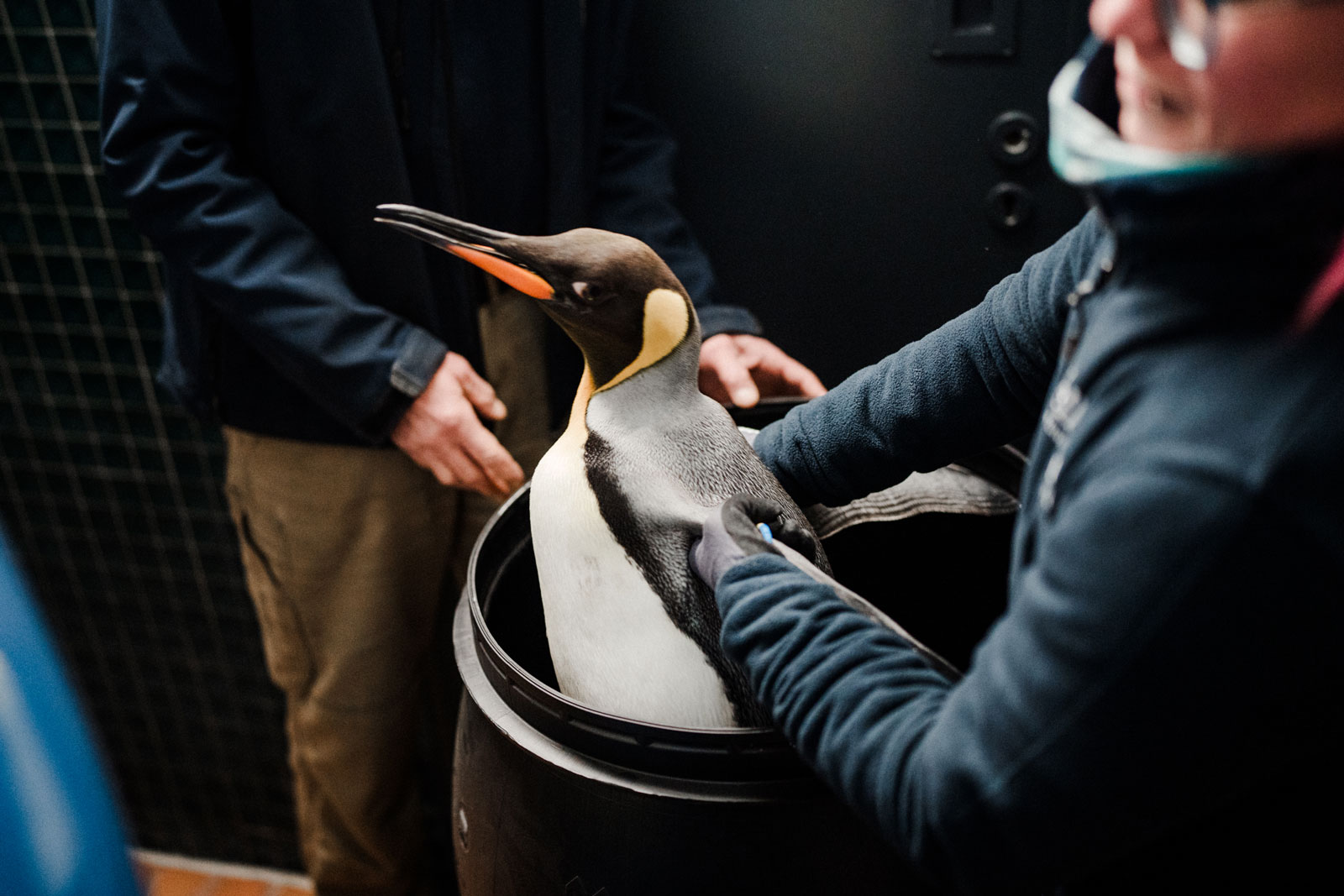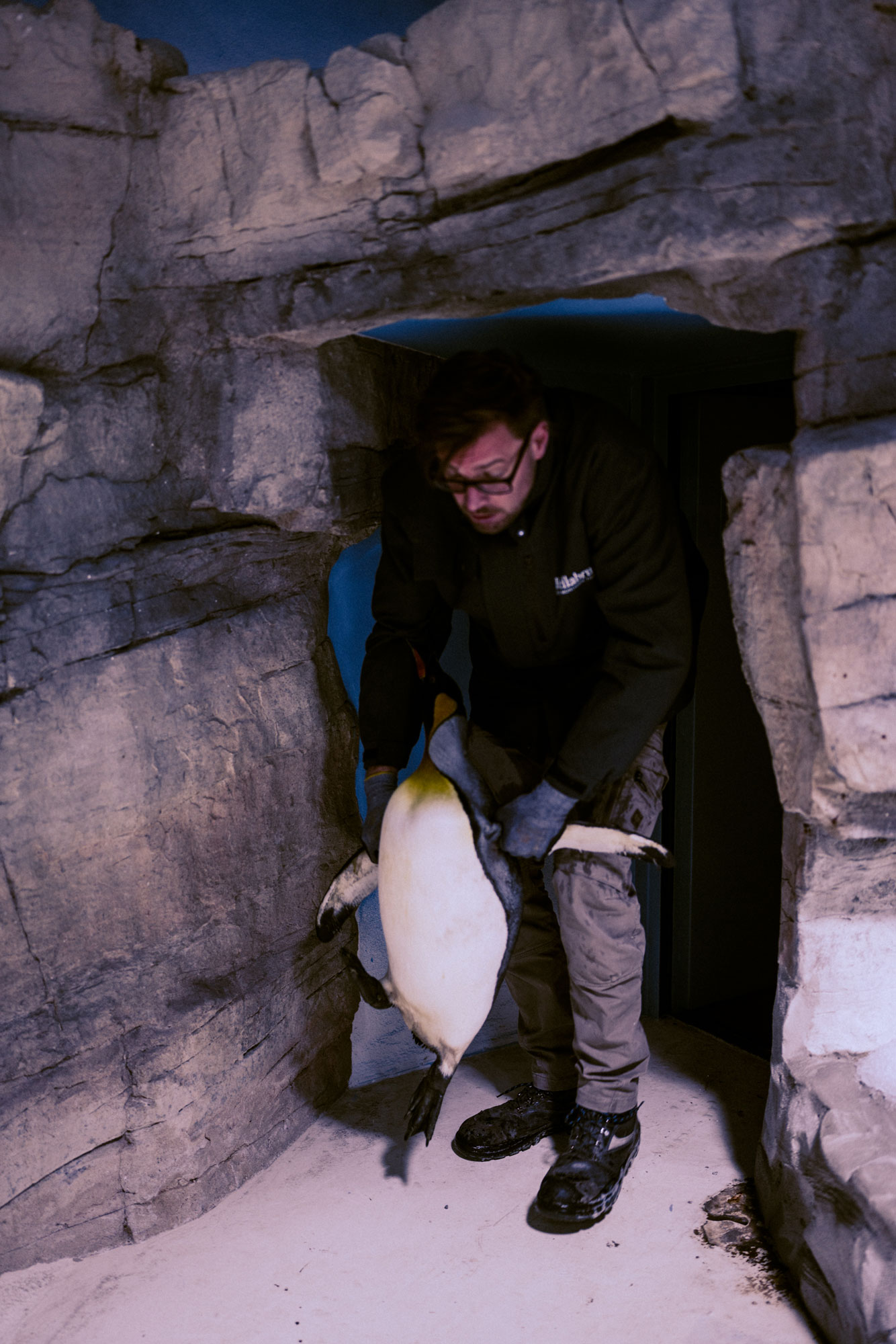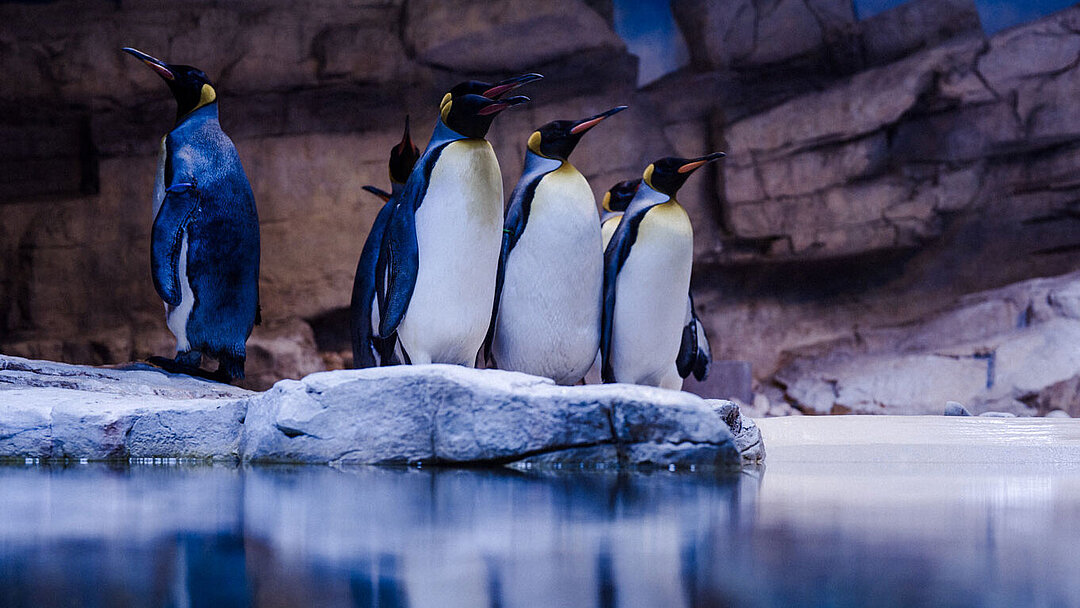
After around two years of renovation, the time has finally come: the king penguins and rockhopper penguins are back at Hellabrunn Zoo! A total of 22 birds moved into a technically overhauled facility over the last fortnight. The animals have settled in well and feel very comfortable in their new old home, which also features a number of design improvements.
The first to arrive were 14 rockhopper penguins, who were brought to Munich from Odense in Denmark by a well-established animal transport company in a specially designed transporter with a pleasant temperature of 5°C. Upon arrival, each bird was given a new colour marking and registered and microchipped before being taken to the newly revamped facility, where they immediately hopped into the fresh, cold water.
A week later, the first arrivals were joined by eight king penguins from Pairi Daiza, a privately owned zoo in Belgian. While the rockhopper penguins had travelled in transport crates, the king penguins spent the journey in special transport barrels with ice. "The transport, move into the new enclosure and settling in went very smoothly," said Dr Eric Diener, curator of the Polar World at Hellabrunn Zoo. "In recent weeks, we conducted extensive test runs of the ventilation and water filter systems in the new facility to ensure that the climatic conditions are optimal for the animals."
The two penguin species will initially be separated by a small grid. "We want to ensure that each penguin species has its own space during the settling in phase. The two species generally get along well, but as with all living creatures, arguments and disagreements can arise. For the settling in period, we want to avoid stress as much as possible." added Diener.
Hellabrunn Zoo participates in the EAZA Ex-situ Programme (EEP) for both rockhopper and king penguins. While king penguins are currently classified as Least Concern by the IUCN Red List of Threatened Species, northern rockhopper penguins are endangered. "One thing is certain: Antarctica, the natural habitat of both species, is naturally threatened by global warming. Half of all penguin species are considered either endangered or critically endangered, also due to environmental destruction," said Diener. Most penguins are monogamous, which means one male and one female typically form a breeding pair and stay with their chosen mate for multiple breeding seasons or for life. Penguins often breed in large colonies and live in Antarctic coastal regions, where they rely on cold ocean currents for food.
The revamped penguin habitat in the Polar World is designed to replicate these climatic conditions as closely as possible. "Of course, we can never replicate the natural habitat of an animal species in all its facets, but ideally we would like to get as close as we can. For the penguin enclosure, this meant a complete overhaul of the technical installations over the past two years,” said zoo director Rasem Baban.
“Although not apparent from the outside, the thermal insulation system was showing its age and the ventilation and filter system was also outdated. All of this urgently needed to be replaced. The project encountered a number of hurdles during the construction phase, which meant that the renovation took longer than planned. We are all the more pleased that there is life in the enclosure again and the animals are clearly feeling at home. As a human, you can actually tell when you visit the facility that the air inside there is really polar fresh."
Mayor and Chair of the Supervisory Board Verena Dietl is equally delighted with the return of the penguins to Hellabrunn Zoo: "Penguins are definitely one of the most popular animals among visitors to the zoo. But, and this is even more important, penguins are important ambassadors for the effects of climate change. Their habitats are particularly vulnerable to global warming, and their adaptability offers valuable insights into the global ecological changes that affect us all."
In addition to the rockhopper and king penguins, Hellabrunn Zoo is also home Humboldt penguins. This species is native to the Pacific coast of Peru and Chile, so they are used to warmer temperatures and can live outdoors all year round. Polar penguins, on the other hand, are very sensitive to air pollution and therefore live in a closed facility.
If you would like to find out more about the penguins moving into the revamped enclosure, please check out the zoo podcast Mia san Tier. The latest episode, released on 15 November, is all about the new, old residents of the Polar World at Hellabrunn Zoo.
